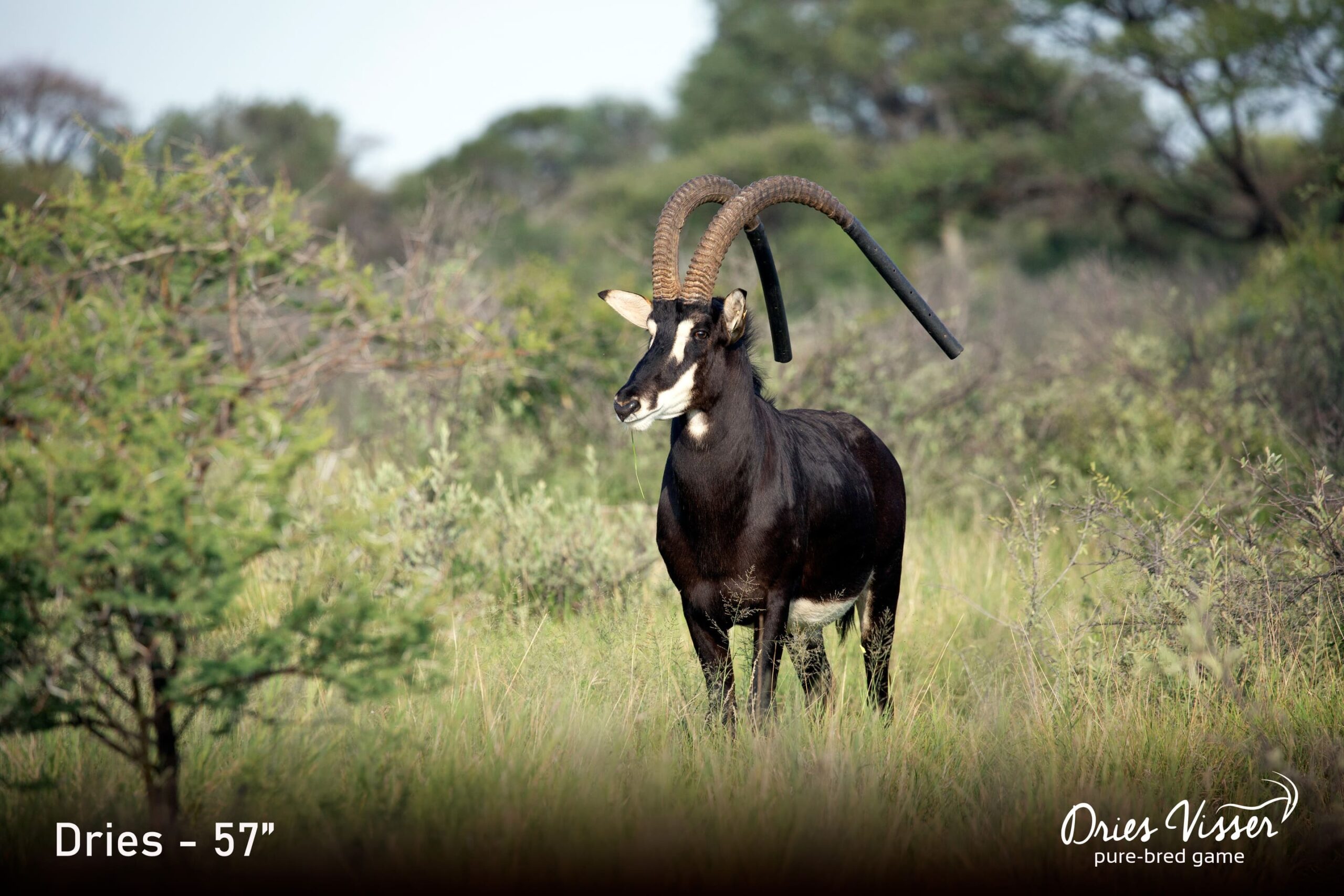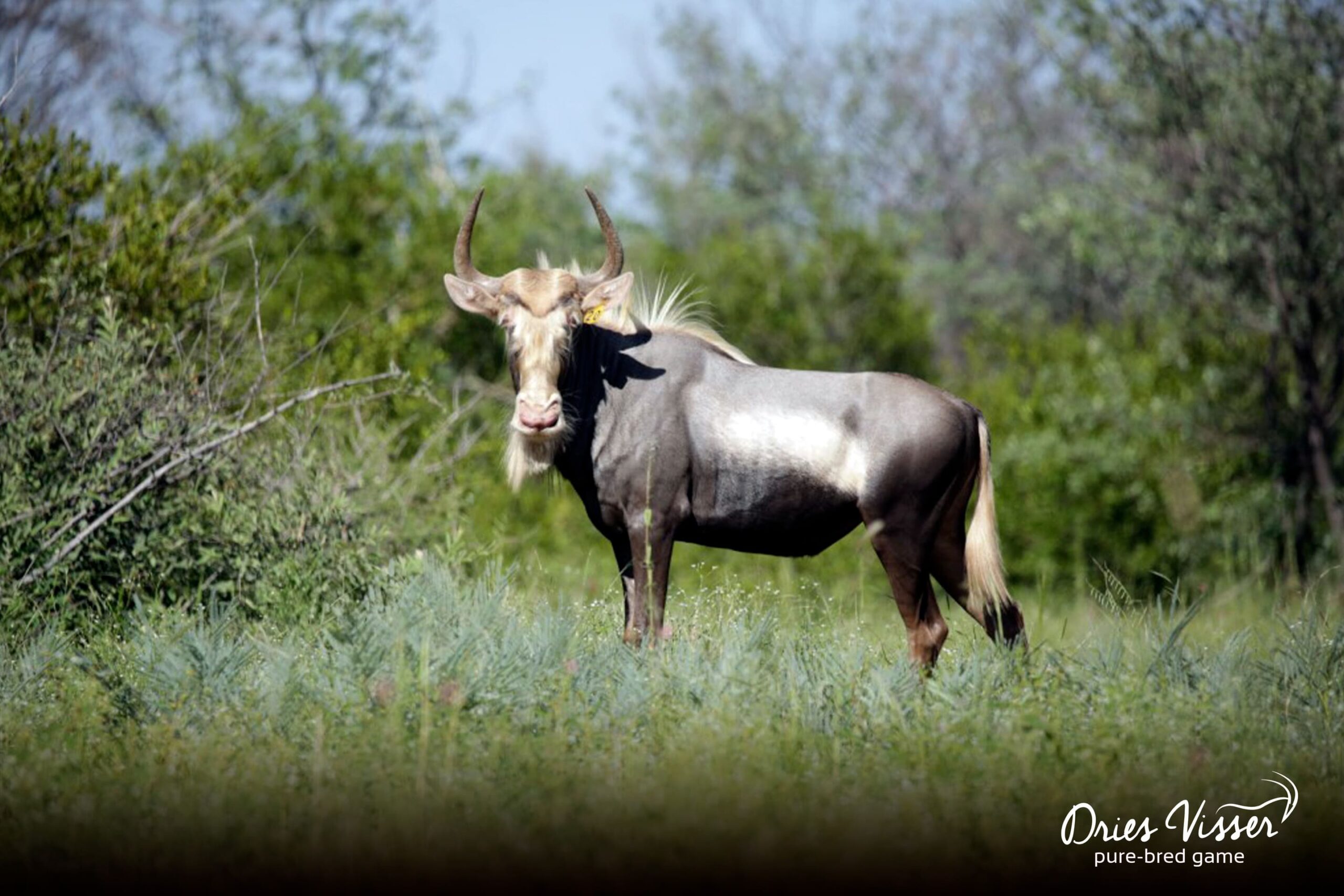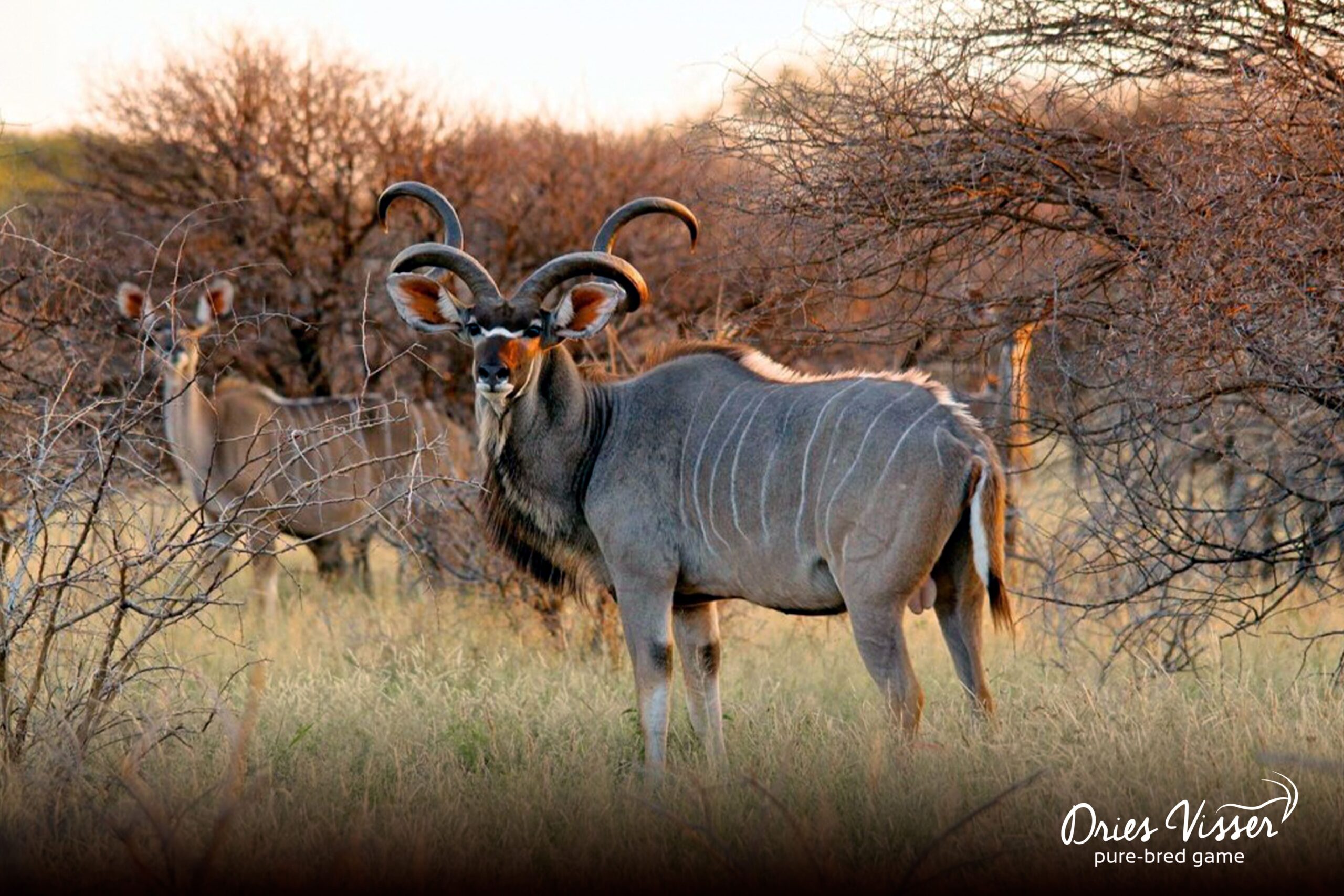Pure Black Mask Zambian Sable

In 1995, Dries Visser visited Zambia and discovered the exceptionally beautiful, pure black mask sable of the Kafue region. To Dries’s expert eye, these unique, pure Zambian sable with enormous horn length and distinctive black masks exhibited the typical characteristics of the giant sable of Angola. It was love at first sight.
Dries immediately embarked on a long-term, challenging project to import a group of black mask sable directly from Zambia. In 1999, he succeeded in bringing one of only two known breeding groups of pure Zambian sable to his farm.
Over the years, Dries carefully managed the breeding of these magnificent animals, and today, he owns several quality black mask Zambian herds. The successful breeding of these spectacular animals, with their giant sable traits, black mask faces, and impressive horn lengths, also led Dries to other high-value game species.
Today, Dries Visser’s sable genetics are highly sought after by breeders of quality sable. The Dries Visser bloodline is well-represented among many of South Africa’s top-quality sable.
Breeding Superior Buffalo
The Dries Visser disease-free buffalo project incorporates different bloodlines, reflecting Dries’ belief that breeding superior buffalo requires utilizing all available genetic lines, regardless of their origin—be it East Africa, Addo, or Kruger.
Kruger buffalo possess a broad genetic diversity not found in other bloodlines. Generally, they have larger bosses, lower horn drops, longer tip-to-tip measurements, and heavier horns, making them particularly desirable for breeding programs.
East African buffalo often have a superior horn spread compared to other breeds, which contributes to their impressive appearance and desirability. By combining these desirable traits from various bloodlines, Dries Visser aims to breed truly exceptional buffalo that exhibit the best characteristics of each genetic line.
Dries believes it is unfair to buffalo buyers to claim that Kruger buffalo represent a higher risk compared to other bloodlines. The reality is that any buffalo, regardless of its origin, is as disease-free as its most recent test results.
By integrating diverse genetic lines and maintaining strict health protocols, the Dries Visser disease-free buffalo project sets a high standard in the industry.

Elevating Wildebeest Genetics – The King Wildebeest

To achieve the best genetics for his wildebeest projects, Dries Visser traveled to Botswana in search of these remarkable animals. He found a few individual golden and king wildebeest on different farms and purchased them. After acquiring the necessary permits and at great expense, he captured these wildebeest and transported them to South Africa to be incorporated into his breeding programs.
In 2010, Dries Visser placed the first king wildebeest on auction. This regal animal needed a name that reflected its exceptional beauty and status. The name “king wildebeest” was chosen because, to Dries Visser, this animal represents the pinnacle of wildebeest breeding—truly the king of the wildebeest.
Dries’ commitment to enhancing the genetic diversity of his herds through careful selection and breeding has resulted in exceptional quality animals that are highly sought after. By integrating the unique traits of the golden and king wildebeest, he has created a lineage that stands out in both appearance and genetic strength. His dedication to superior breeding practices ensures that the legacy of these majestic creatures continues to thrive.
Advancing Kudu Genetics
Many years ago, Dries Visser recognized that, with careful breeding, the greater kudu would eventually become one of the most sought-after plains game species in high-value game breeding. Understanding the potential of these majestic animals, he meticulously hand-selected the best kudu specimens available to enhance the genetics of his existing kudu breeding program. Through years of dedication and selective breeding, he has significantly improved the quality and desirability of his kudu herds. Today, top-quality kudu represent one of the best investments in high-value game breeding, thanks to their impressive physical characteristics and genetic superiority.
A testament to the success of his breeding program came in 2015 when Dries Visser sold a kudu named Hercules, boasting an astounding horn measurement of 66⅝ inches, for a record R9.4 million. This sale not only underscored the value of superior genetics but also solidified Dries Visser’s reputation as a leading figure in the game breeding industry.
By continuously striving for excellence and focusing on genetic improvements, Dries Visser has positioned his greater kudu as premier specimens within the high-value game breeding market. His commitment to quality and innovation ensures that his kudu herds remain highly prized and sought after by breeders.

Fostering Excellence in Quality Impala and Other Game Breeding

When it comes to black impala, Dries Visser, like with other exceptional animals, prioritizes quality over quantity. He firmly believes that, historically, there’s been an overemphasis on acquiring animals solely for their color, neglecting the importance of overall quality.
Recognized globally, the Thabazimbi/Rooibokkraal area stands out for hosting the finest southern impala specimens. The records speak for themselves, attesting to the superior quality found in this region. Leveraging this knowledge, Dries Visser strategically incorporates these exceptional southern impala bloodlines into his black impala herd, ensuring that his animals possess not only the striking coloration but also the top-tier genetics characteristic of the Thabazimbi/Rooibokkraal lineage.
This meticulous approach extends to his saddleback impala breeding program, where he applies the same high-quality genetics to produce promising offspring.
Beyond impala, Dries Visser oversees quality breeding projects for other notable game species, such as nyala and golden gemsbok. By maintaining a steadfast commitment to excellence in breeding, Dries Visser continues to elevate the standard of game breeding, producing animals of exceptional quality and genetic superiority.
